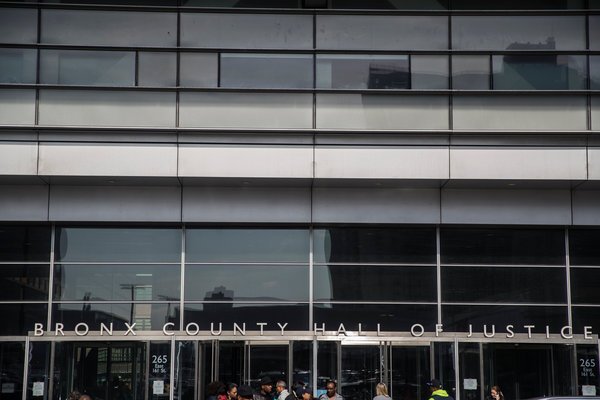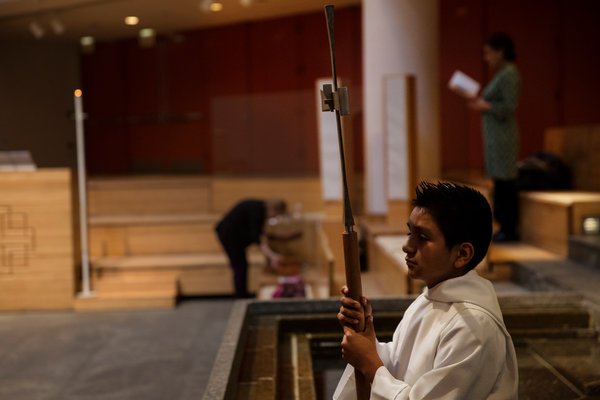Advertisement
Supported by

By Liz Robbins
Feb. 27, 2018
From the early days of the Trump administration, Mayor Bill de Blasio proclaimed that he would defend the residents of New York from the newly aggressive immigration authorities, “regardless of where they come from, regardless of their immigration status.”
A year later, the federal government has ratcheted up its attacks against so-called sanctuary cities like New York — including Chicago, Philadelphia and San Francisco — threatening to withhold millions of dollars in federal funding for law enforcement programs and detaining growing numbers of undocumented residents. Cities faced a Friday deadline to prove their cooperation with the immigration authorities, as the United States Immigration and Customs Enforcement agency, known as ICE, continued making arrests. Nationwide, the number of arrests in 2017 increased 41 percent from the year before.
In New York, where some 500,000 residents are undocumented, if ICE wants to arrest somebody, it can.
“Putting a bubble over a city where ICE can’t penetrate is not possible,” said Camille Mackler, the legal policy director of the New York Immigration Coalition, an activist group. “People think ‘sanctuary city’ — that you’re able to walk freely without fear. That’s not the case.”
ICE agents have been appearing in New York’s courthouses and at people’s front doors, and, according to immigrant advocates, even entered a Manhattan church with a Spanish-speaking immigrant congregation. While the New York Police Department does not generally hand over detainees to ICE, it does, through a bureaucratic backdoor, essentially provide a road map: Arrest information is sent to the state, which shares it with the Federal Bureau of Investigation. ICE can now see that information.
“It’s hardly a sanctuary,” said Muzaffar Chishti, the director of the Migration Policy Institute’s office at New York University School of Law. “The mayor of the City of New York does not hide people under his desk. We’re fully cooperating with ICE. People get deported from New York all the time.”
Immigration arrests of residents without criminal records more than tripled in New York after President Trump took office. Of the 2,976 arrests in 2017, 899 were of people without criminal convictions, up from 250 out of 1,762 in 2016, according to ICE statistics. Under the Obama administration, undocumented immigrants without criminal records were not priorities for deportation.
Mr. de Blasio often says that the term “sanctuary city” is misinterpreted: It is a policy intended to make undocumented victims or witnesses feel safe to report crimes to the police without fear of immigration repercussions.

To that end, New York does not deputize police officers to carry out immigration laws, under a policy known as 287g, which Mr. Trump has strongly supported. Since 2014, the city has declined to honor what are known as detainers — requests by ICE to hold undocumented immigrants who have been charged or convicted of crimes for 48 hours past their release dates so that immigration agents can pick them up. The city also removed immigration authorities from the Rikers Island jail complex where they had easy access to prisoners when they were released.
“It forces them to go to inconvenient and costly routes to get to their target,” Mr. Chishti said.
New York’s detainer law, however, has exceptions: The police must turn over a person convicted of one of 170 serious crimes within the last five years — including arson, homicide, rape or robbery — and in cases in which a judge has signed a detainer request.
ICE issued 1,526 detainer requests to the New York Police Department in the 2017 fiscal year, up from 80 in 2016. The Police Department complied with none of them.
By its own policy, ICE does not enter places of worship, schools and hospitals. But courthouses have become frequent sites of arrests because they offer a degree of control that agents would not have when going to people’s homes.
“Because courthouse visitors are typically screened upon entry to search for weapons and other contraband, the safety risks for the arresting officers and for the arrestee inside such a facility are substantially diminished,” ICE said in a statement.
According to the Immigrant Defense Project, a nonprofit organization that is tracking arrests at city and state courthouses, 87 arrests were made in New York City courts in 2017, compared with six in 2016. So far, this year, there have been 13 courthouse arrests.
Aboubacar Dembele, 27, was one. He was surrounded by immigration agents moments after stepping out of a hearing in Bronx Criminal Court. Mr. Dembele, an undocumented immigrant from the Ivory Coast, had pleaded not guilty to an assault charge stemming from a fight on a city bus in December; the judge had reduced the charge to a misdemeanor from a felony, and had set a follow-up court date to address the charges.
Instead, Mr. Dembele is awaiting deportation at the Hudson County Correctional Facility in Kearny, N.J.
“The way that they come and ambush people is outrageous,” said his lawyer, Monica Dula, of the Legal Aid Society of New York.
Mr. Dembele was placed on ICE’s radar because of his arrest; his court appearance was public record.
In January, ICE clarified its policy to say that it would not arrest family members or witnesses. Actions inside courthouses, it said, would be against “targeted aliens with criminal convictions, gang members, national security or public safety threats.”
“The public is led to believe that ICE is pulling out dangerous individuals,” the Brooklyn district attorney, Eric Gonzalez, said at a news conference to denounce ICE’s courthouse actions. He added that low-level offenders are more often being arrested. “There is a chilling effect on our noncitizen and immigrant populations.”
As he spoke, ICE agents were in a Brooklyn courthouse to pick up a defendant. The judge postponed the case when the man’s lawyer, Roger Asmar, told her that his client was afraid to appear.
Mr. Gonzalez has instructed prosecutors to bring lesser charges against immigrants accused of low-level offenses so as not to trigger deportations or affect their immigration applications, and the Manhattan district attorney, Cyrus R. Vance Jr., has declined to prosecute most people arrested for evading the fare on the subways.
Mr. de Blasio has come out against that idea, however, for public-safety reasons.
The city, which has provided a municipal ID card often used by undocumented residents, has also allocated $47.5 million for immigrant legal services this year.
To the ire of some immigrant activists, Mr. de Blasio said the money could not be used to aid undocumented immigrants convicted of the serious crimes defined by the detainer law. The New York City Bar Association wrote him a letter claiming “it was fundamentally unfair” to deny people legal help, including those eligible for a complex form of relief for victims of domestic violence or unaccompanied minors.
Last summer, Mr. de Blasio eliminated city money for that same class of immigrants in deportation proceedings. The City Council secured private funding to keep representing clients who fell into this category.
At times, it seems that Mr. de Blasio’s fierce rhetoric has given some immigrants an inflated sense of security. In December, two ICE officers entered the downstairs lobby of Saint Peter’s Church in Midtown Manhattan that houses a Spanish-speaking congregation, La Iglesia de Sion, according to the Rev. Amandus J. Derr, a pastor at Saint Peter’s. Father Derr escorted the two men from the building. An official for ICE said it could not confirm that the officers were from the enforcement agency.
The incident left the congregation rattled and its numbers depleted. One member attending a recent Sunday Mass, Angela Carvajal, 49, relayed her fears. “I hope the mayor will do something about this,” she said in Spanish. Her friend, Alicia Garcia-Fuentes, 40, added, “Isn’t he supposed to protect the undocumented?”
Follow Liz Robbins on Twitter: @nytlizrobbiins
Isvett Verde contributed reporting.
Related Coverage
Advertisement
